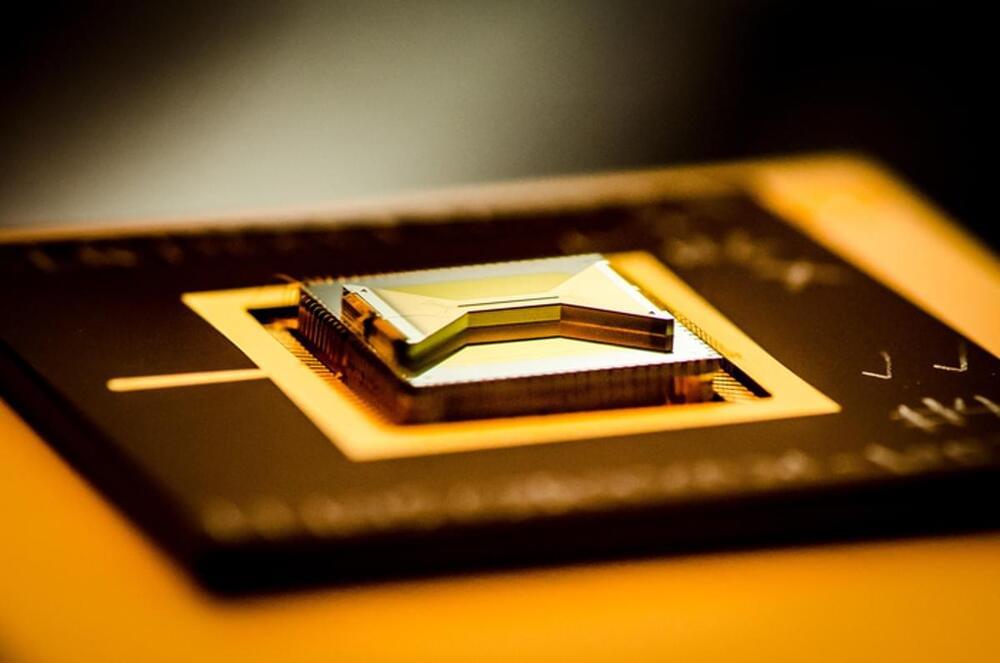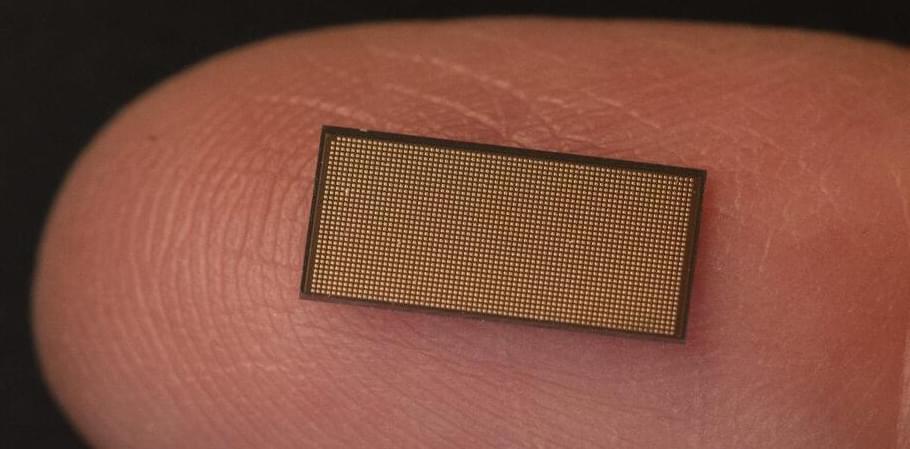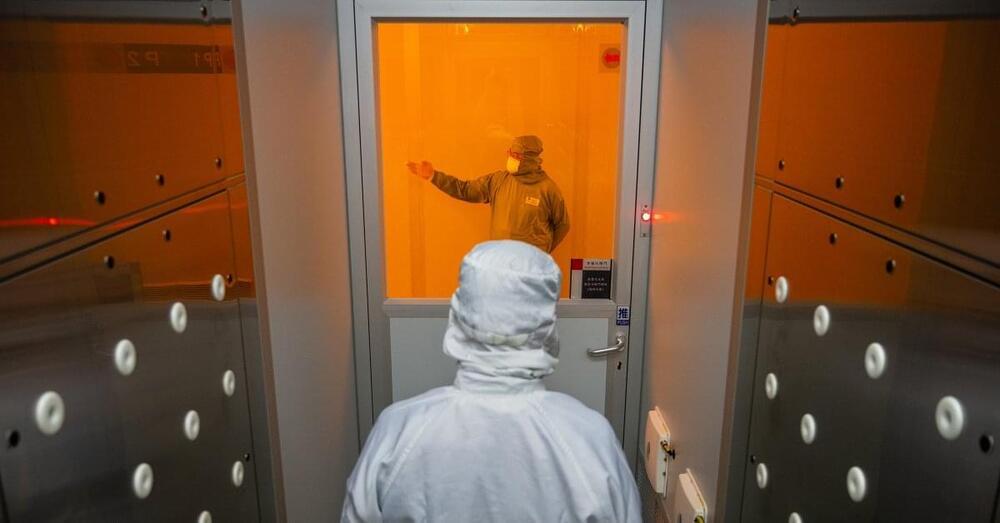Researchers demonstrated a new data exfiltration mechanism on Air-Gapped computers that uses ethernet cables to generate wireless signals.
Category: computing – Page 630

Quantum computer breakthrough as scientists show vital behaviour for first time
Scientists have demonstrated new behaviour, vital for the creation of quantum computers, that marks a major breakthrough.
For the first time, researchers were able to show in an experiment that a variety of quantum computing pieces, taken together, were more accurate than the sum of their parts.
Individually, quantum computers are built out of a range of different pieces, some of which can sometimes break. But in the new experiment, scientists showed that those pieces stuck together can be less prone to error than any particular part.
The Music of Proteins Is Made Audible Through a Computer Program That Learns From Chopin
Proteins are structured like folded chains. These chains are composed of small units of 20 possible amino acids, each labeled by a letter of the alphabet. A protein chain can be represented as a string of these alphabetic letters, very much like a string of music notes in alphabetical notation.
Protein chains can also fold into wavy and curved patterns with ups, downs, turns, and loops. Likewise, music consists of sound waves of higher and lower pitches, with changing tempos and repeating motifs.
Protein-to-music algorithms can thus map the structural and physiochemical features of a string of amino acids onto the musical features of a string of notes.
Elon Musk WARNED Everyone China No Longer Playing Games 🚫
How true?
Elon Musk reiterated Tesla’s commitment to China, stating that the company will continue to invest in the country. Musk made his announcement at a pre-recorded question-and-answer session at China’s Cyberspace Administration’s Global Digital Conference. Musk has hailed the country that is vital to his electric vehicle company for the second time this month, calling it as a “global leader in digitalization.” As per Mr. Musk’s comments made during another pre-recorded webcast at the World New Energy Vehicle Congress less than two weeks earlier, Chinese automakers were the “most internationally competitive.” Musk was enthusiastic in his praise for the nation that is vital to Tesla’s electric vehicle business, and his remarks came as the company works to repair its image in China. Musk stated, “I have a lot of respect for the various Chinese automakers who are driving these (EV) technologies.” Musk stated Chinese carmakers are among the best at software, which he claims will “shape the future of the vehicle industry” during his three-minute speech. “My honest view is that China invests a lot of resources and efforts adopting the latest digital technologies in various areas, including the automotive industry,” Musk said in a recent video. China has become a global leader in digitalization in the vehicle industry.” “Tesla will continue to boost its investment and research and development efforts in China.” However, negative coverage of Tesla has also grown in China over the last year. In one high-profile case, a woman claiming to be a Tesla customer protested an apparent brake failure in her car at the Shanghai auto show in April. Tesla was accused of having an “arrogant and aggressive approach” in China, according to official media, after a video of the incident went viral on Chinese social media. But now, Tesla has been attempting to repair its image in China following a barrage of negative headlines. The corporation has been under governmental scrutiny for its privacy practises, as well as several recalls in China. Some state and military employees are apparently restricted from driving Tesla electric vehicles. Musk emphasized data protection in his speech and outlined the many types of data that are stored locally. “At Tesla, we’re pleased to see a bustle of fresh laws and regulations targeted at enhancing data handling,” Musk remarked. In the past, the corporation is said to have broken ground on a big Shanghai facility. According to Reports, Tesla sold 44,264 Made-in-China automobiles by August 2021. There were 31,379 for export, which marked an increase over July’s 32,968 made-in-China automobiles sold and June’s 33,155 units sold. Local EV firms like Xpeng Inc., Li Auto Inc., and Nio Inc. are also posing a threat to Tesla in China. Last month, shipments of China-made cars to domestic purchasers increased, and exports from the company’s Shanghai factory — largely to Europe — increased. As a result, Tesla’s overall China shipments increased 34% from July to 44,264 units in August. According to sources, Tesla momentarily suspended some tasks at its Shanghai factory last month due to a global shortfall of semiconductors. Because of a shortage of crucial chips, a portion of a production line at the China plant was shut down for nearly four days in August. Tesla created a data centre in China to contain all of the data generated by our businesses there, which include manufacturing, sales, service, and charging. All personally identifying information is kept secure in China and is never sent abroad. Data is only permitted for international transfer in very rare instances, such as spare parts orders from overseas.” Tesla is acting in response to new Chinese government regulations governing how carmakers with cameras and sensors collect and use data. Tesla also said in a statement that it was “glad to hold discussions with industry experts” regarding new data security requirements for automobiles in the country. “Data security in automobiles is critical. Tesla will make every effort to maintain data security by implementing automotive data security management.”
WATCH THIS NEXT👇👇👇
🎥 Elon Musk Now MUST Face All German Opposition ASAP
➡️ https://youtu.be/Jr91WBD8fF0
🚨 CLICK HERE TO SUBSCRIBE ► https://bit.ly/2Yp4tl7
❗️ALL business partnership inquiries & ALL copyright matters please contact our Official Instagram Account @TeslaVision1

Dr. Leticia Toledo-Sherman — Senior Director, Drug Discovery, Tau Consortium, Rainwater Foundation
Developing drugs for a range of tauopathies — dr leticia toledo-sherman, senior director, drug discovery, tau consortium, rainwater charitable foundation.
Dr. Leticia Toledo-Sherman is Senior Director of Drug Discovery of the Tau Consortium (https://tauconsortium.org/) for The Rainwater Charitable Foundation (https://rainwatercharitablefoundation.org/medical-research) and also holds an appointment as Adjunct Assistant Professor of Neurology at UCLA.
Dr. Toledo-Sherman leads drug discovery activities for an international network of scientists working to develop therapies for Tauopathies, a group of neurodegenerative disorders characterized by the deposition of abnormal Tau protein in the brain.
Previously, Dr. Toledo-Sherman was Director of Medicinal Chemistry and Computer-Aided Drug Design at the CHDI Foundation, leading drug discovery programs for therapeutic development in Huntington’s Disease (HD). At CHDI, she also led a structural biology initiative critical to the understanding of the relationship between structure and biological function of huntingtin, the protein that when mutated causes HD.
Prior to joining CHDI, Dr. Toledo-Sherman was Executive Director of Chemistry at Lymphosign (now part of Pharmascience Inc), a privately held biotechnology company that applied rational design principles to the development of therapeutics for blood cancers. From 2000 to 2,004 she led a multi-site, multidisciplinary team using chemical proteomics and bioinformatics to discover therapeutic targets and to investigate the mechanism of action of drugs.

Intel unveils second-generation neuromorphic computing chip
Intel today announced a major update to its neuromorphic computing program, including a second-generation chip called Loihi 2 and Lava, an open-source framework for developing “neuro-inspired” applications. The company is now offering two Loihi 2-based neuromorphic systems — Oheo Gulch and Kapoho Point. They will be available through a cloud service to members of the Intel Neuromorphic Research Community (INRC) and Lava via GitHub for free.
Full Story:
Intel unveiled the second generation of its neuromorphic chip and claims it will be able to solve planning and optimization problems.

This programmable fiber has memories and can sense temperature
Memory and more
The new fiber was created by placing hundreds of square silicon microscale digital chips into a preform that was then used to create a polymer fiber. By precisely controlling the polymer flow, the researchers were able to create a fiber with continuous electrical connection between the chips over a length of tens of meters.

From Phones to Cars and Fridges, This Taiwan Firm Powers the World. But Success Brings Problems
On the northwest coast of Taiwan, nestled between mudflats teeming with fiddler crabs and sweet-scented persimmon orchards, sits the world’s most important company that you’ve probably never heard of. Taiwan Semiconductor Manufacturing Co., or TSMC, is the world’s largest contract manufacturer of the semiconductor chips—otherwise known as integrated circuits, or just chips—that power our phones, laptops, cars, watches, refrigerators and more. Its clients include Apple, Intel, Qualcomm, AMD and Nvidia.
Inside its boxy off-white headquarters in sleepy Hsinchu County, technicians in brightly hued protective suits—white and blue for employees, green for contractors and pink for pregnant women—push polished metal carts under a sallow protective light. Above their heads, “claw machines”—nicknamed after the classic arcade game—haul 9-kg plastic containers containing 25 individual slices, or “wafers,” of silicon on rails among hundreds of manufacturing stations, where they are extracted one by one for processing, much like a jukebox selecting a record. Only after six to eight weeks of painstaking etching and testing can each wafer be carved up into individual chips to be dispatched around the planet.
“We always say that it’s like building a high-rise,” one TSMC section manager tells TIME, pointing to how his technicians diligently follow instructions dictated to them via tablet. “You can only build one story at a time.”

8-Year-Old Asteroid Hunter From Brazil Is Officially The World’s Youngest Astronomer
When Nicole Oliveira was just learning to walk, she would throw up her arms to reach for the stars in the sky.
Today, at just eight years of age, the Brazilian girl is known as the world’s youngest astronomer, looking for asteroids as part of a NASA-affiliated program, attending international seminars and meeting with her country’s top space and science figures.
In Oliveira’s room, filled with posters of the Solar System, miniature rockets and Star Wars figures, Nicolinha, as she is affectionately known, works on her computer studying images of the sky on two large screens.